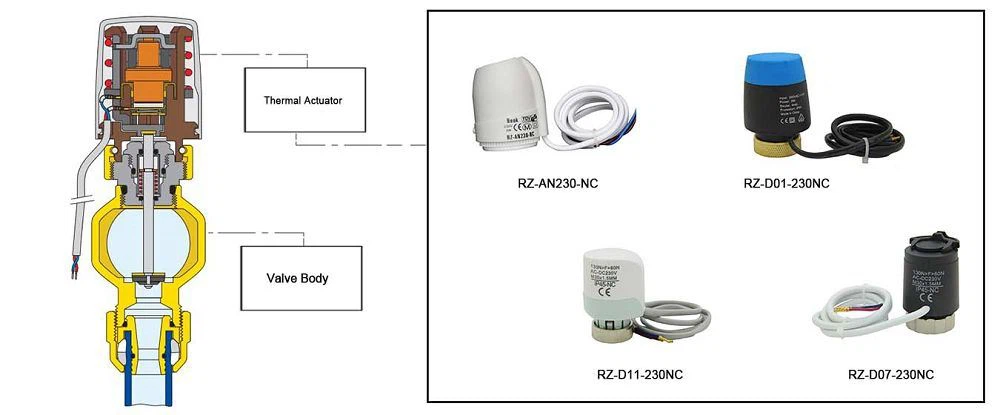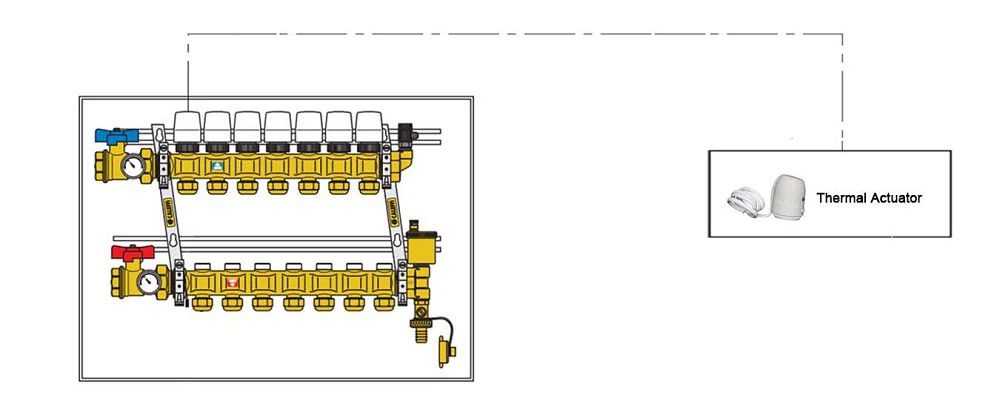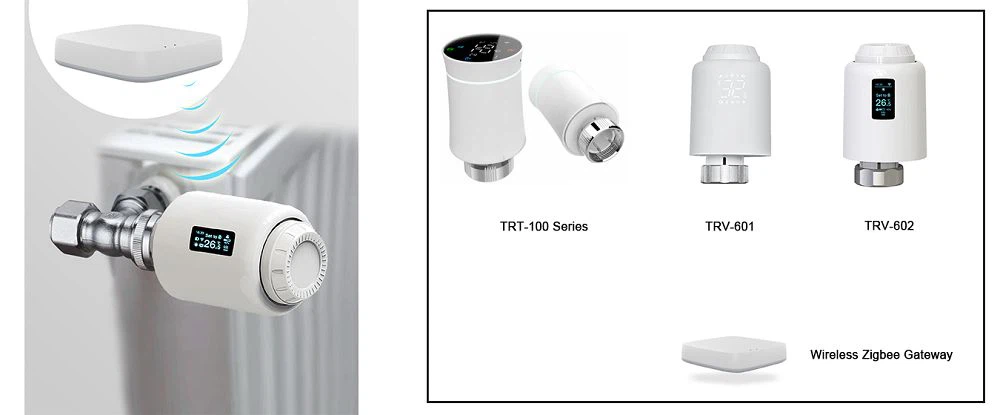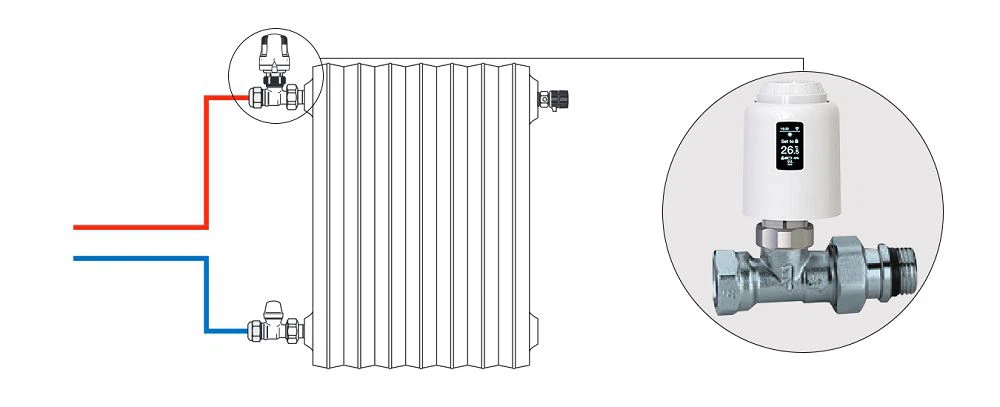The difference between Electric Thermal Actuator and Radiator Valve Actuator
Sep 20, 2021
What is a Thermal Actuator?
Actuators are simply devices used to transform energy into motion. A thermal actuator is a type of non-electric motor made of components such as a piston and a thermal sensitive material capable of producing linear motion in response to temperature changes.
With power off, the device (actuator + valve) is “normally closed”.
With power on, the valve opens thanks to the action of a wax expansion thermostatic element.

What are the applications of thermal actuators?
In central heating system, the thermal actuator is mainly in conjunction with:
● Thermostatic radiator valves

● Radiator and underfloor heating systems distribution manifolds

It is under the control of a room thermostat or of another electrical switching device.
What is a Thermostatic Radiator Valve Actuator?
Thermostatic Radiator valve actuator, is a thermostatic control head for radiator valves.

What are the applications of thermostatic radiator valve actuator?
Thermostatic radiator valve actuator is in conjunction with thermostatic valves (sometimes called TRVs), fitted to radiators give user more control over the temperature in individual rooms of home and help to reduce the boiler energy, to save money.

You Might Also Like
-

Grey/White Keyboard Plate Smart Underfloor Heating Thermo...
-

Zigbee Gas Boiler Smart Thermostat TDR89-ZB-WPB
-

Battery Powered RF Wireless Boiler Thermostat BOT-X306
-

8-Channel Concentrator Hub Controller CCT-10 for NC Under...
-

Normally Closed Type Electric Thermal Actuator RZ-AN230-NC
-

OLED Screen Display Wi-Fi Radiator Actuator TRV-604

